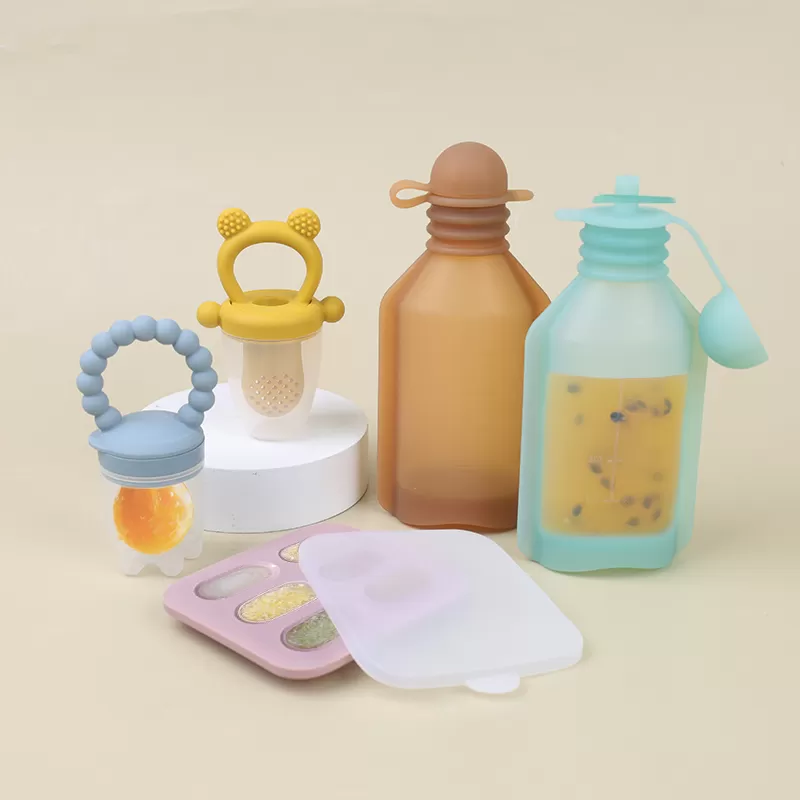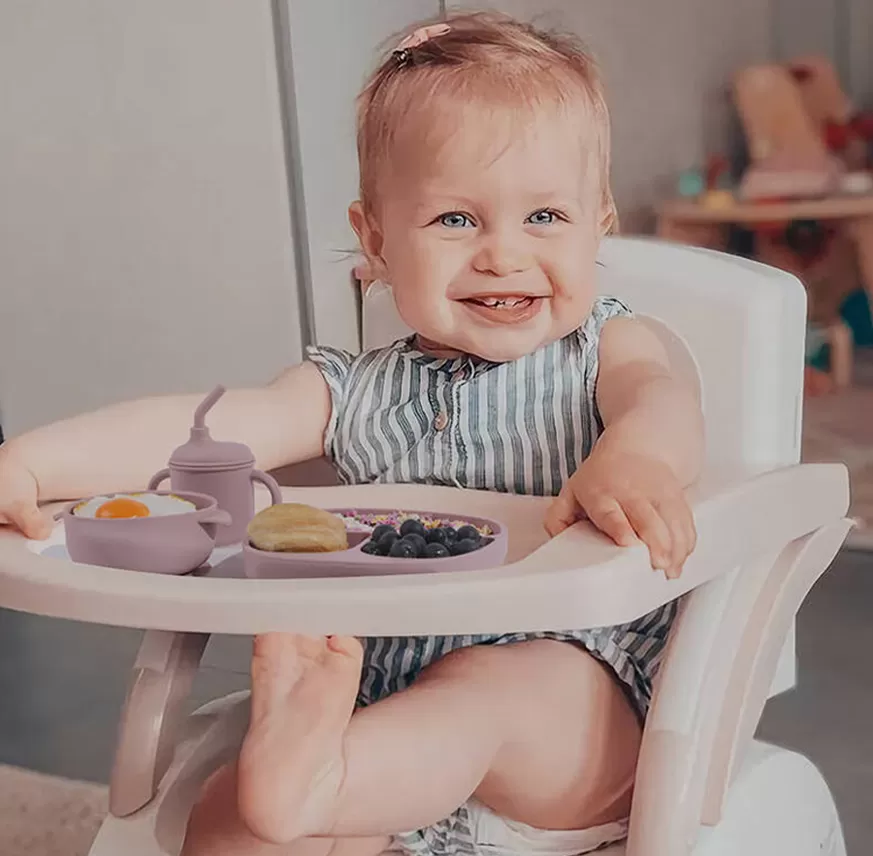
It was a peaceful Sunday morning, and Emily was preparing breakfast while baby Noah played nearby. She reached for the Silicone Baby Food Pouch, pre-filled with homemade apple puree—soft, squeezable, and perfect for baby-led weaning.
Noah’s giggles filled the room as Emily handed him the baby fruit feeder, stuffed with cold strawberry slices. The BPA-free silicone made chewing safe and soothing for his teething gums.
Later, Emily popped out spinach puree from the flexible ice cube tray—each cube ready to blend into Noah’s lunch. The tray’s high and low temperature resistance made freezing and reheating worry-free.
Before their afternoon walk, Emily tucked Noah’s pacifier into the Silicone Bear Shape Pacifier Holder. Its adorable design and hygienic seal made it both stylish and practical for moms on the move.
What a nice day!
As a factory with in-house design capabilities, we developed the optimal hole size for our baby fruit feeder—perfectly balancing smooth fruit purée flow with anti-choke safety.

1) Banana slices/small chunks
2) Strawberry slices/small pieces
3) Blueberries - squished or very ripe
4) Ripe Peach slices/chunks
5) Ripe Pear slices/chunks
6) Ripe Mango chunks
7) Ripe Avocado chunks
8) Cooked Carrot sticks/chunks - very soft
9) Cooked Apple slices/chunks - unsweetened
10) Chilled/Frozen Fruit chunks - like banana or breastmilk/formula pops
Recommended Age for Baby Fruit Pacifier Feeders (EU/US Guidelines)
Primary Recommendation: 6 Months and Older
1)Developmental Readiness:
Infants typically gain adequate head/neck control and can sit with minimal support.
The tongue-thrust reflex (which pushes solids out of the mouth) fades around 4-6 months.
Babies begin developing hand-mouth coordination to hold and manipulate the feeder.
2) Pediatric Guidelines:
World Health Organization (WHO) & American Academy of Pediatrics (AAP): Recommend exclusive breastfeeding/formula until 6 months, with solid foods introduced thereafter.
European Food Safety Authority (EFSA): Supports 6 months as the optimal starting age for complementary foods.
3)Safety & Digestion:
Babies under 6 months lack the oral motor skills to safely manage solids (even through mesh), increasing choking risk.
Immature digestive systems are better prepared to handle fruit/veggie purees at 6+ months.
Yes, 100% food-grade silicone pacifiers are safe for babies when used properly. They’re BPA-free, non-toxic, dishwasher-safe, and softer than latex. Choose products meeting EU EN 1400 or FDA standards.
100% food-grade silicone is widely considered the healthiest pacifier material. It’s naturally BPA-free, non-toxic, odorless, and hypoallergenic. Unlike latex (which may cause allergies), silicone resists bacteria and withstands repeated sterilization. Always choose pacifiers meeting EU EN 1400 or FDA safety standards.
Yes, silicone fruit pacifiers (mesh feeders) can safely soothe teething when used correctly:
1) Pain Relief: Chilled or frozen fruit (e.g., banana) numbs gums and provides gentle pressure.
2) Nutrition + Exploration: Babies taste natural fruit vitamins while satisfying their chewing instincts.